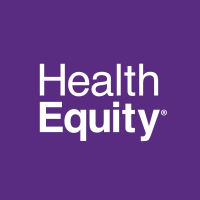 fung_derf
8 años hace
fung_derf
8 años hace
HealthEquity's Partner Network, HSA Membership Surge
MOREY STETTNER
3/20/2017
In late 2001, Steve Neeleman pondered a simple question: What will health insurance look like in 10 years?
At the time, Neeleman was a surgical resident at University of Arizona. His employee benefits included traditional health insurance with standard copays.
"There were HSAs but you were on your own," said Neeleman, a board-certified physician. "I remember thinking, 'How can we make HSAs easy to use?'"
Preparing to deliver a presentation to his peers, Neeleman thought like a futurist. He figured that over the next decade, patients would increasingly act like consumers.
"It was an academic exercise, grand rounds with about 50 or 60 other physicians (in the audience)," recalled Neeleman, founder and vice chairman of HealthEquity (HQY) in Draper, Utah. "I told them patients will have more skin in the game and will start asking, 'How much will it cost me?'"
His talk planted the seed for an entrepreneurial venture. By 2002, he had launched HealthEquity.
Today, HealthEquity is among America's largest HSA custodians, serving 2.7 million HSAs with $5 billion in assets. The company's surging expansion in network partners — health plans and large employers — coupled with its 28% year-over-year increase in HSA members, propels its growth.
"After my first meeting with (HealthEquity's) management in late 2014, I went back and told my team, 'This is the best business model I've ever seen,' " said Alexander Paris, president of Barrington Research in Chicago. "They've executed flawlessly ever since with subscriber growth, visible and predictable revenue and high (member) retention rates."
A Step Ahead
Many banks and credit unions offer HSAs, but HealthEquity's business largely revolves around these accounts. Neeleman's team developed an online platform with a user-friendly interface.
"And it's always getting better," Paris said. "It was created in the cloud, and that allows you to do constant upgrades behind the scenes without disrupting the customer experience. Everyone else is playing catch-up to HealthEquity."
IBD'S TAKE: HealthEquity, a member of the IBD 50 list of leading growth stocks, came public at 14 in 2014. In Monday afternoon trading, the stock was at 45.46, down 1.6%. The stock has been building a new base with a possible buy point of 49.35. IBD examined how HealthEquity stock looks ahead of its earnings due Tuesday and a possible options strategy.
The company stays one step ahead of marketplace trends. As robo-advisors have proliferated in recent years by offering online financial planning and portfolio rebalancing, HealthEquity became the first HSA administrator to offer access to individualized, Web-based investment advisory services.
"We want people to maximize their contribution to their HSA, to see it as an investment and savings account and not a spending account like a FSA (flexible spending account)," Neeleman said.
Along with educating consumers on the advantages of treating HSAs as investment vehicles, HealthEquity offers an integrated platform to simplify enrollment, claim processing and investments. Employers welcome such integration.
Before signing on with HealthEquity, Casey Lund faced frustrations as an employer dealing with HSA providers. Paperwork mishaps and electronic file submissions posed problems.
"But since we started working with HealthEquity three years ago, it's been a really good working relationship," said Lund, senior benefits manager at Vivint Solar (VSLR) in Lehi, Utah. "On the employee side, the HealthEquity website is easy to use. On the employer side, we get a number of reports that we can pull very easily and the employer portal tracks key numbers such as year-to-date HSA contributions and invoices that need to be paid."
The Color Purple
Employee benefit managers want an HSA provider that delivers consistently superior service. Otherwise, they hear about it.
"I expect never to get a complaint from an employee," Lund said. "Employees think of us as an extension of all our benefit carriers, and it's a bad reflection on us if things go wrong. I've never had an issue with HealthEquity."
Neeleman and his leadership team don't just preach the value of excellent service. They've also crafted an organizational culture built around the color purple as a symbol for exceptional performance.
"We always say 'keep it purple,'" Neeleman said. "It's shorthand for being remarkable and noteworthy. We compete against banks; they're more brown."
Purple appears everywhere, from the paint adorning the company's conference room walls to its website and branding materials. It's an ongoing reminder to HealthEquity's roughly 900 employees to prize customers and delight them. Neeleman credits Seth Godin's 2003 book, "Purple Cow," as an inspiration.
When Neeleman greets new hires during orientation, he asks them to read a 2001 article by Alec Appelbaum entitled: "The Constant Customer." It emphasizes the importance of flawless execution and fixing mistakes quickly.
"My brother (Jet Blue founder David Neeleman) called when we were just starting out and said, 'I won't give you a dollar (in seed capital) until you read this article,'" Neeleman said with a laugh. "He said, 'It's the DNA of your company.'"
The commitment to service has paid off. Through surveys, the company tracks its "net promoter score" to gauge customer satisfaction and gather feedback.
"HealthEquity has a significant investment in customer service with its best-of-breed account portal and 24/7 call centers," said Randy Reece, senior analyst at Avondale Partners in Nashville, Tenn. "They've ingrained in the organization that customer service is their best advantage."


 Hot Features
Hot Features

